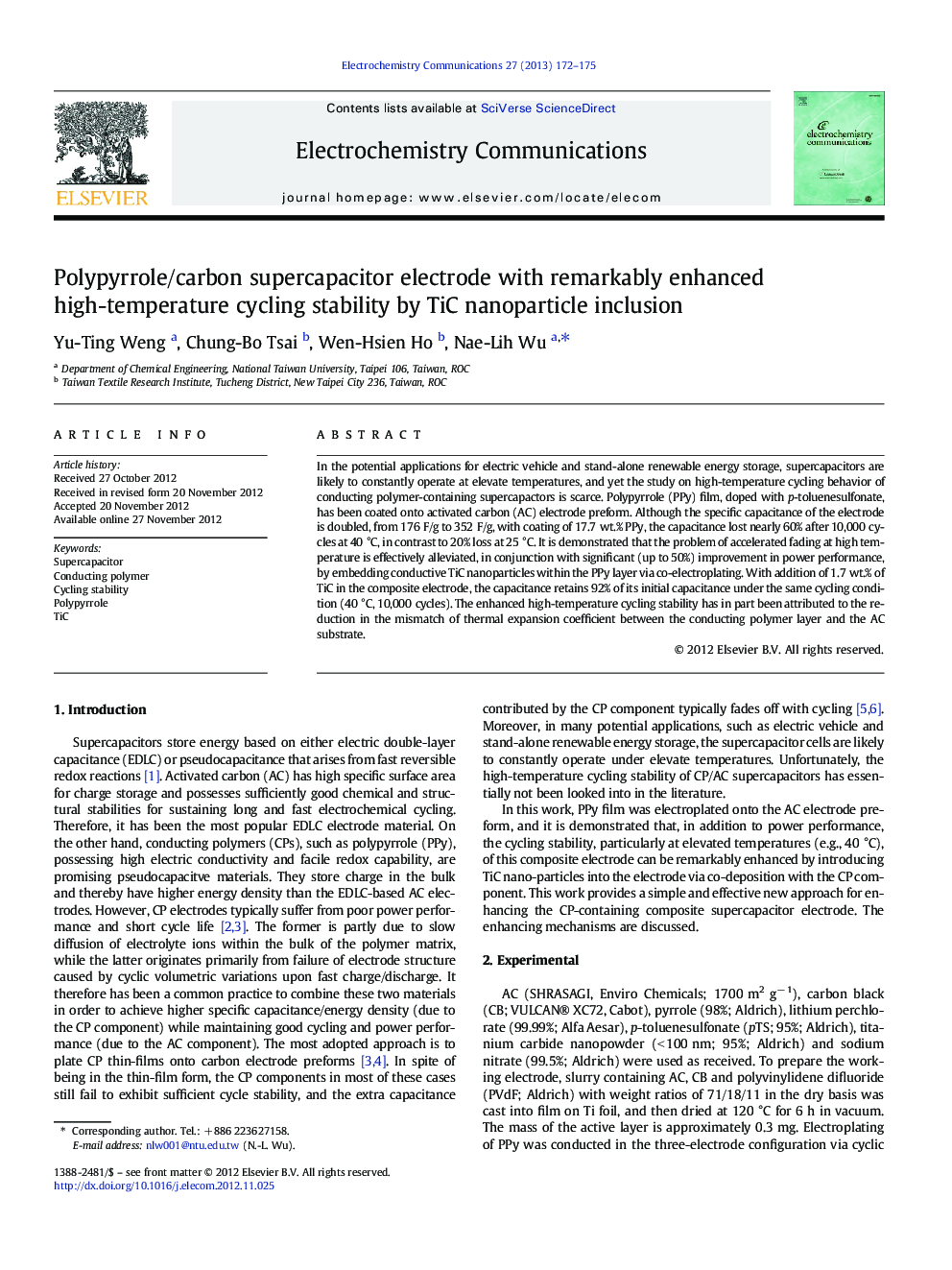| Article ID | Journal | Published Year | Pages | File Type |
|---|---|---|---|---|
| 179561 | Electrochemistry Communications | 2013 | 4 Pages |
In the potential applications for electric vehicle and stand-alone renewable energy storage, supercapacitors are likely to constantly operate at elevate temperatures, and yet the study on high-temperature cycling behavior of conducting polymer-containing supercapactors is scarce. Polypyrrole (PPy) film, doped with p-toluenesulfonate, has been coated onto activated carbon (AC) electrode preform. Although the specific capacitance of the electrode is doubled, from 176 F/g to 352 F/g, with coating of 17.7 wt.% PPy, the capacitance lost nearly 60% after 10,000 cycles at 40 °C, in contrast to 20% loss at 25 °C. It is demonstrated that the problem of accelerated fading at high temperature is effectively alleviated, in conjunction with significant (up to 50%) improvement in power performance, by embedding conductive TiC nanoparticles within the PPy layer via co-electroplating. With addition of 1.7 wt.% of TiC in the composite electrode, the capacitance retains 92% of its initial capacitance under the same cycling condition (40 °C, 10,000 cycles). The enhanced high-temperature cycling stability has in part been attributed to the reduction in the mismatch of thermal expansion coefficient between the conducting polymer layer and the AC substrate.
► Polypyrrole containing TiC nanoparticle inclusions is deposited on activated carbon. ► The composite electrode exhibits 50% improvement in power performance. ► The composite exhibits 91% capacitance retention after 10,000 cycles at 40 °C. ► The polypyrrole/activated carbon electrode without TiC retains only 40%. ► High-temperature cycling stability is linked to mismatch in thermal expansion.
